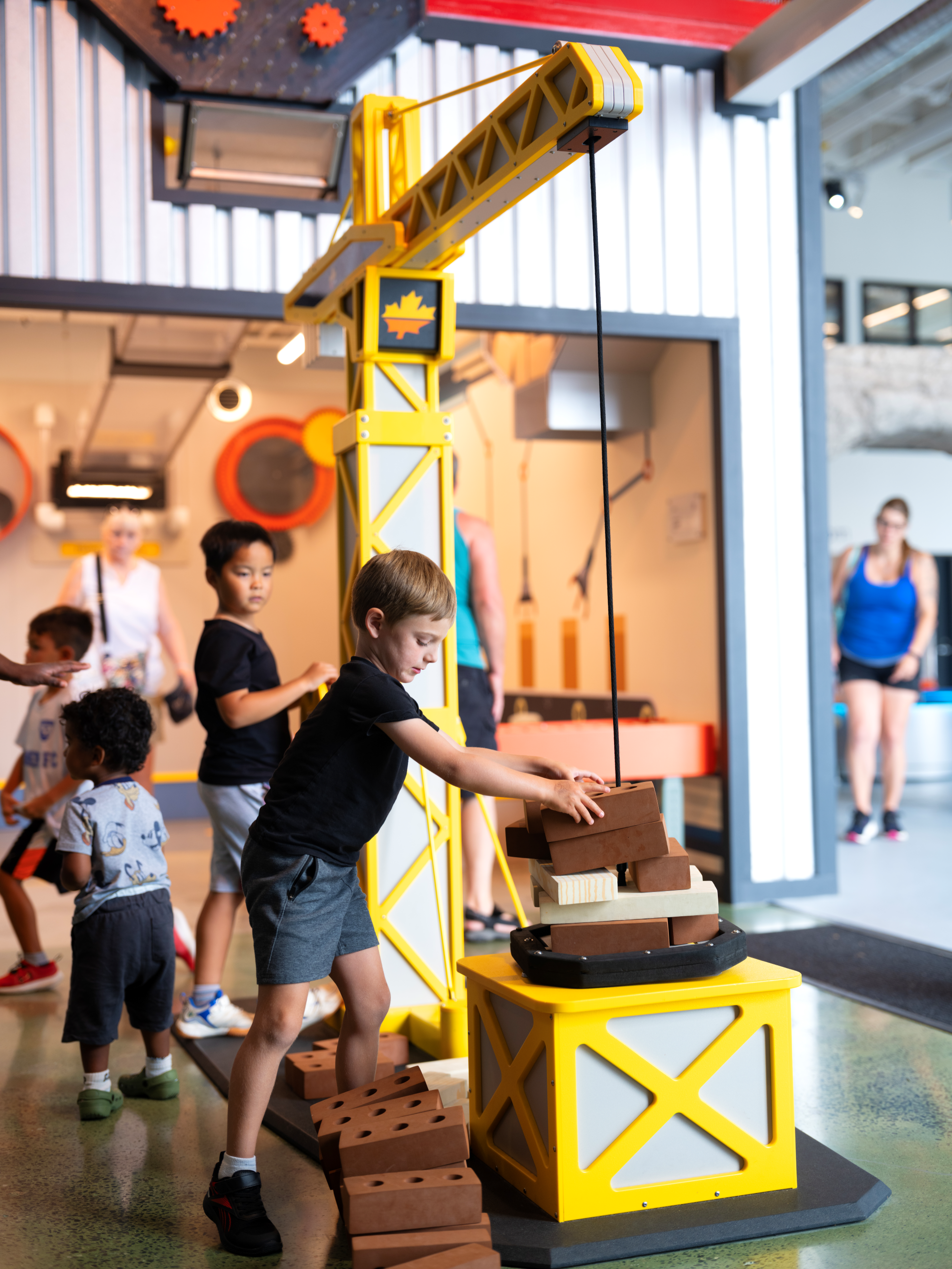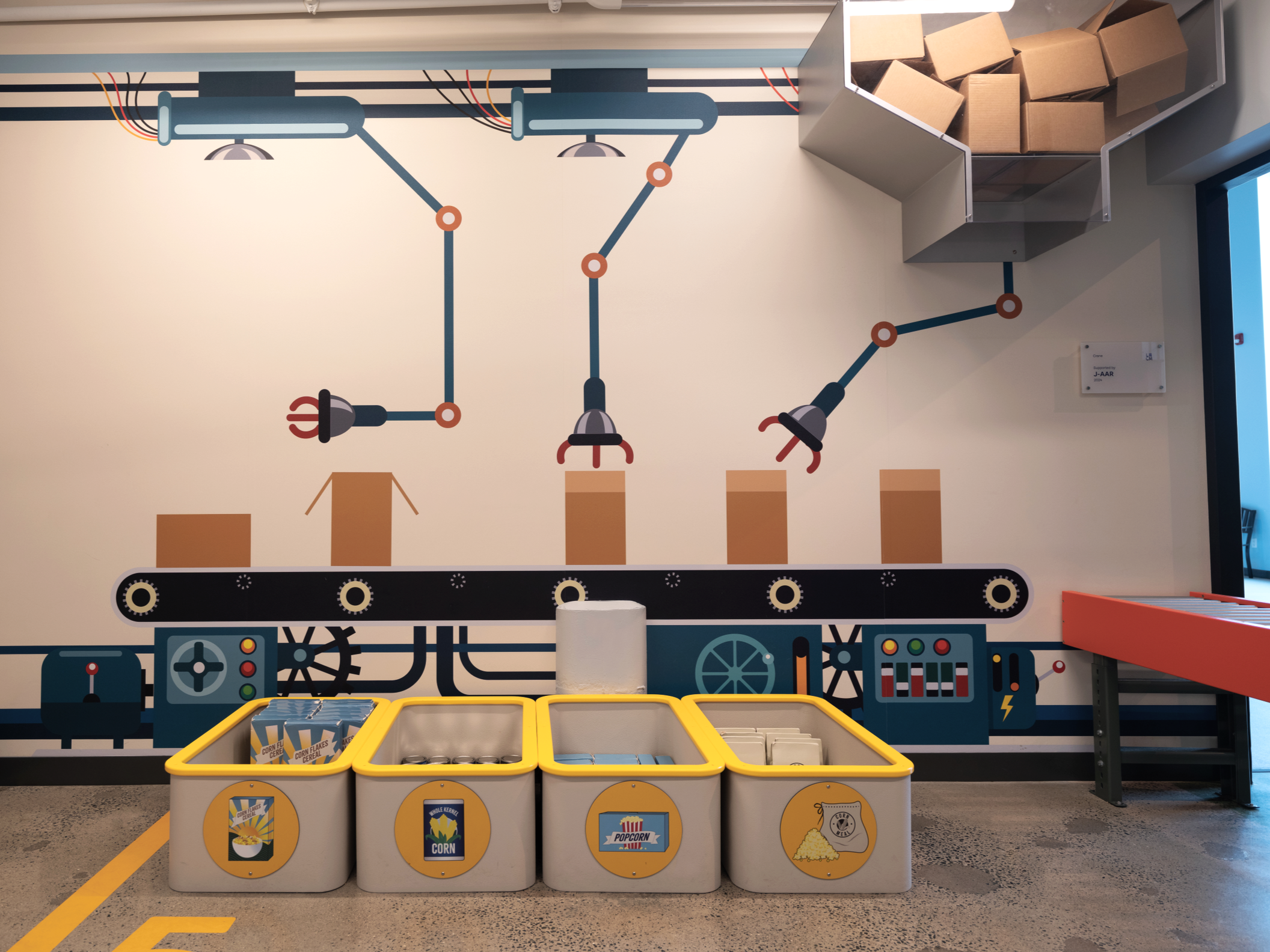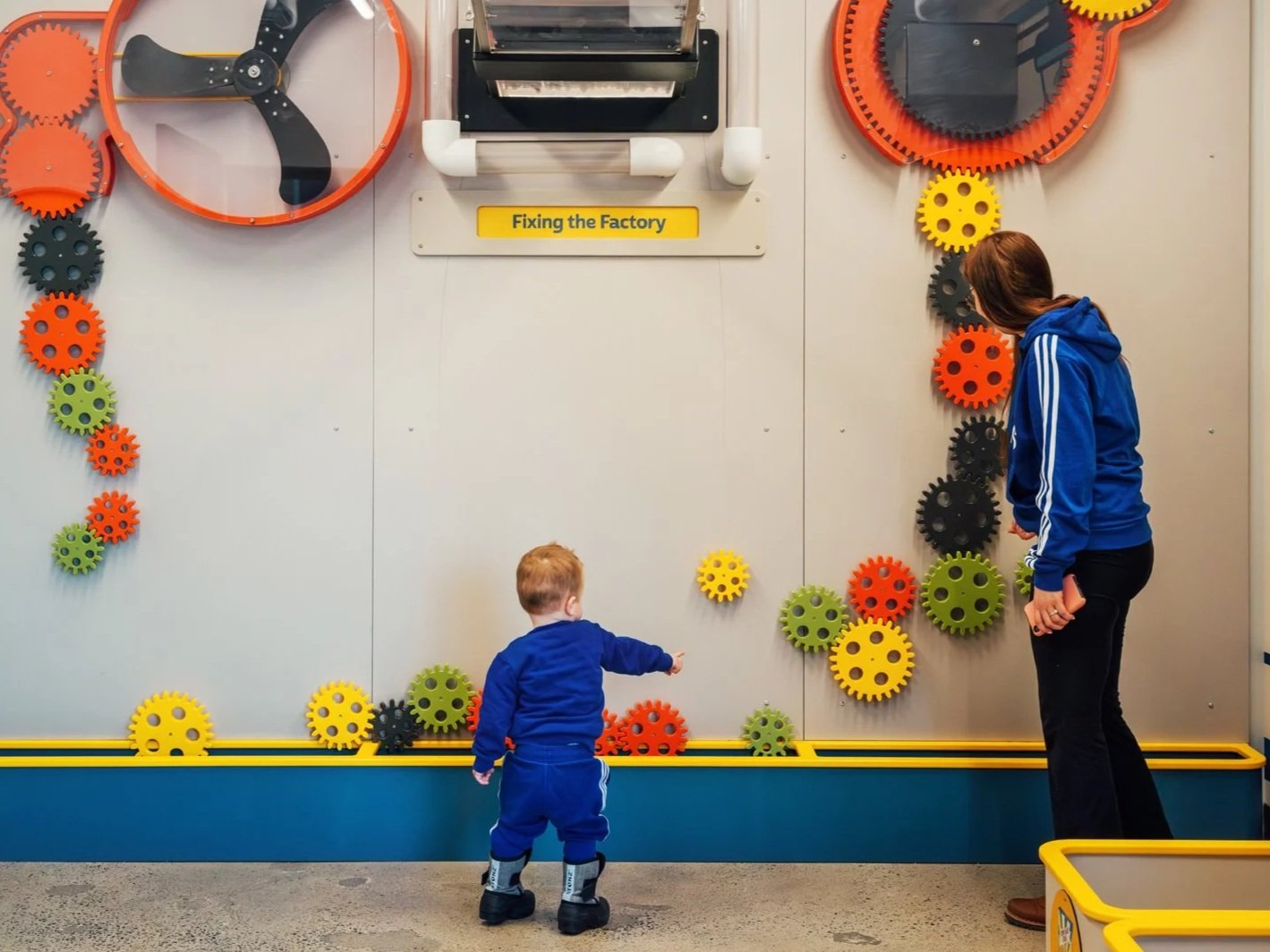Where Play Takes Root
London Children’s Museum
From Farm to Factory
One of the centerpiece experiences in the newly renovated London Children’s Museum is the Farm Works gallery. Originally envisioned by Reich + Petch and Skolnick Architecture, Boss served as the primary fabricator and also provided design insights for the gallery’s dynamic factory zone. Designed to highlight the region’s agricultural roots, the space helps visitors make meaningful connections to how food is grown, processed, and sold. Blending pretend play with hands-on pneumatic elements, Farm Works invites young guests to explore the journey from farm to table in an engaging, interactive way.
Growing Connections
The journey begins in the farm-inspired section of the gallery, where guests step into the daily rhythms of agricultural life. Children can gather eggs from the chicken coop, milk an interactive cow, climb aboard a pretend-play tractor, and pick fresh produce from the vegetable gardens and corn stalks. As they harvest the corn, the experience continues with a hands-on corn cutter, symbolizing how ears of corn are transformed into kernels—ready to travel up into the factory portion of the gallery on the second floor.
Production in Motion
From the farm, harvested kernels make their way into the bustling factory, where the process of food production comes to life. Guests first see their grain collected and sent through a towering processing ball wall, guided by handwheels, levers, and conveyor belts that sort and move the harvest along. The journey continues at the packaging station, where crops travel through faux boxes before tumbling down a playful plinko wall at the front of the factory. Overhead tracks carry the balls—representing grain—around the first floor before recycling them back into the gallery, keeping the process in constant motion. On the ground level, guests can also step into the role of problem-solvers at the gear wall, connecting the gear train to “fix the factory” and keep production moving.
“The exhibits Boss created for the London Children’s Museum are incredibly interactive, engaging, and loved by visitors of all ages! The Boss team is clearly passionate about their work. Their enthusiasm for creating exceptional experiences is evident in both their process and the final product, making them fun and easy to work with. Even after the project was completed, their team remained attentive and responsive. We felt supported throughout the entire process and highly recommend working with this outstanding team!”
Cultivating Curiosity
The Farm Works gallery brings the London Children’s Museum’s mission to life in a truly immersive way. Rooted in the region’s agricultural history and real-world farming practices, it connects guests to the land around them while introducing the fundamentals of physics and simple machines. Spanning multiple levels, the gallery invites children to experiment, explore, and play—cultivating curiosity and a deeper understanding of how food is grown, processed, and shared with the community.
Features:
Corn Stalks | Guests can “harvest” ears of corn from the faux stalks, bringing the fields to life.
Chicken Coop | Eggs roll down from the hens and into a collection bin, ready for gathering.
Vegetable Gardens | Pretend-play garden beds let guests pick and place a variety of vegetables.
Corn Cutter | Place ears of corn into the machine to simulate separating kernels from the cob, then watch as air tubes whisk the kernels into the factory.
Kernel Pick-Up | A lever-activated machine collects kernels from the cutter and drops them into a collection bin, ready to be sent overhead to the processing wall.
Corn Processing Wall | A towering wall of pathways and simple machines sorts kernels into different categories as balls tumble into bins below.
Packing Station | Guests load kernels into faux boxes on the counter, sending them into the exterior plinko system.
Plinko Wall | Facing the museum floor, the plinko wall drops kernels into a playful cascade before sending them along overhead ramps through the first story of the factory.
Fixing the Factory | An interactive gear wall invites guests to connect magnetic gears and complete a massive gear chain.
Whisper Tubes | Tubes stretch between levels of the gallery, letting guests send secret messages from floor to floor.










